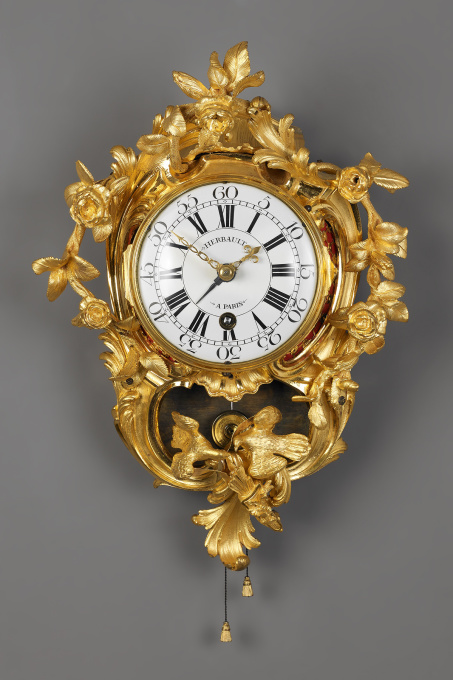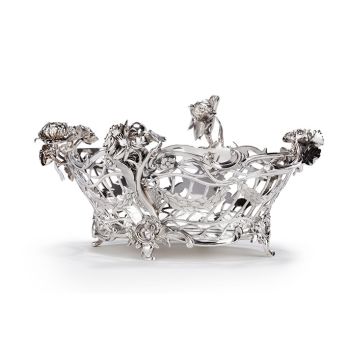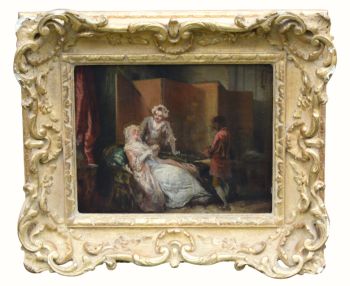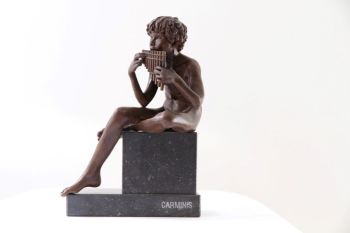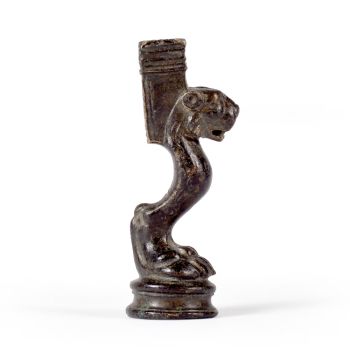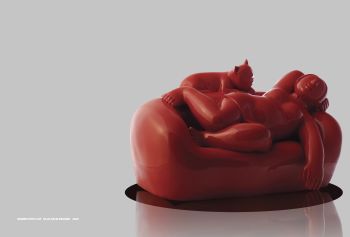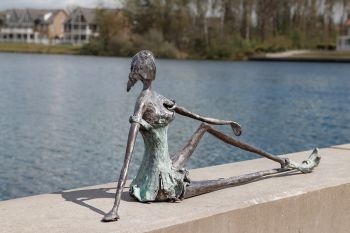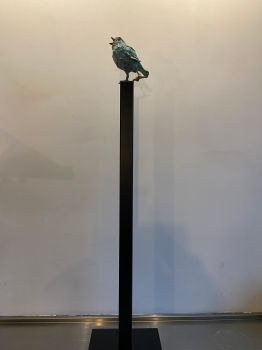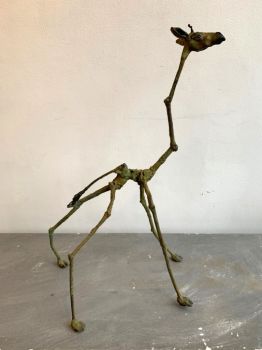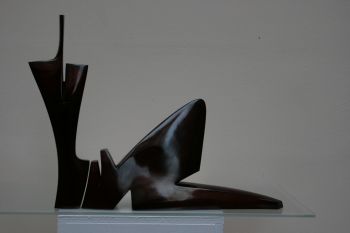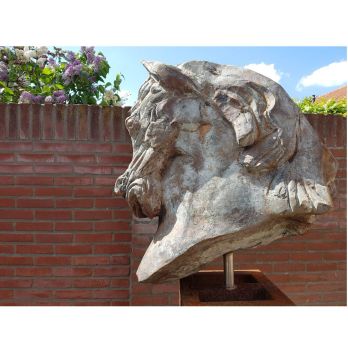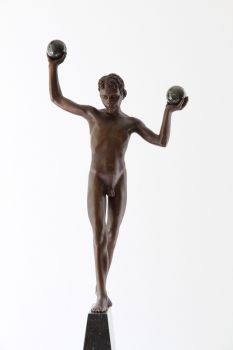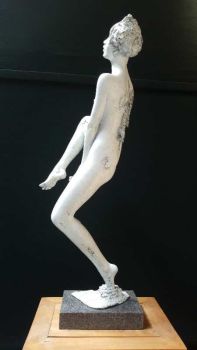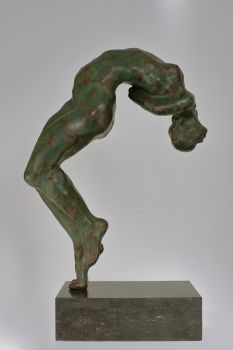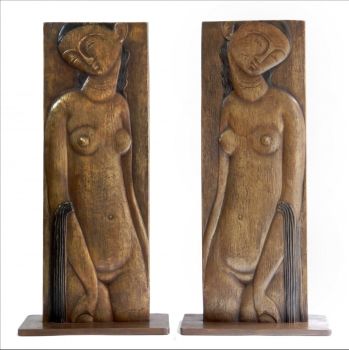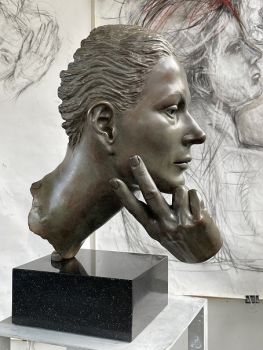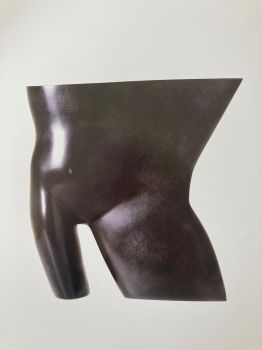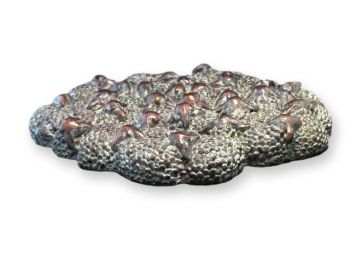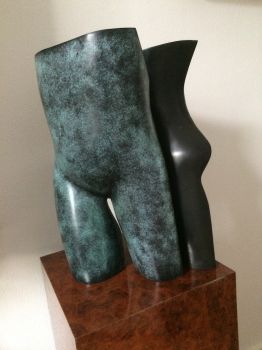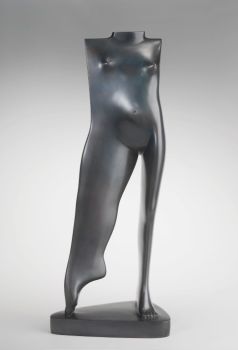A French Louis XV "Cartel d'Alcove" 1750
Louis-François Herbault
BronceMetalEsmalte
35 ⨯ 25 ⨯ 13 cm
Actualmente no disponible a través de Gallerease
- Sobre la obra de arteA Cartel clock made by Louis-François Herbault, who became master clockmaker in 1743. He worked from the Quai Pelletier between 1744 and 1748 and later moved to the Rue de Grenelle Saint-Honoré between 1759 and 1789.
The clock is signed on the dial and on the clockwork: HERBAULT À PARIS
and bears the number: 264.
The clockwork has a three-week going train, a striking train on request, and an alarm. The striking train is operated with a cord. The white enamelled dial has Roman numerals to indicate the hours and Arabic numerals in the outer ring to indicate the minutes. The openwork hands are made of gilt bronze. The dial to set the alarm is made of blued steel.
The beautiful asymmetric gilt-bronze case is built up with flowery sprigs in the shape of a rose-bush. At the bottom two lovebirds have perched upon Amor’s quiver. The ensemble is a celebration of love. From the bottom up the branches are twining upwards around the dial to end in a crest of leaves and flowers. Behind the lovebirds there is an opening that shows the pendulum.
The case is an idiosyncratic example of the “style Rocaille”, which slightly differs from the sometimes exaggerating Rococo. The Rocaille is characterized by long undulating lines that look very natural. Often the lines consist of leaf and flower motives that culminate in an emphatic composition, like in this case the crest of leaves and flowers at the top. Although the details of objects made in the Rocaille style show a lot of asymmetry, the entities always have a balanced and natural appearance.
Provenance:
Private Collection Brussels - Sobre el artistaLouis-François Herbault es conocido como un relojero francés. Herbault se convirtió en Maître en el año 1745. Se convirtió en Juré en 1761 y Garde en 1769. Su taller estaba ubicado en Quai Pelletier, 1744-1748 y la Rue de Grenelle St. Honoré, 1759-1789. Aparte de los relojes, también produjo relojes. Una pieza en particular en oro y esmalte se exhibe en el Victoria and Albert Museum de Londres. Su obra está firmada HERBAULT A PARIS.
Artwork details
Categoría
Estilo
Material y Técnica
Colour
Related artworks
- 1 - 4 / 17
Artista Desconocido
Japanese transition-style lacquer coffer 1640 - 1650
Precio a consultarZebregs & Röell - Fine Art - Antiques
Artista Desconocido
PAREJA DE ANTORCHAS O VELAS DE TECA DORADA Y LACADA INDONESIA18th century
Precio a consultarZebregs & Röell - Fine Art - Antiques
Artista Desconocido
UN RARO TELESCOPIO DE CUERO LACADO JAPONÉS GRANDE1750 - 1800
Precio a consultarZebregs & Röell - Fine Art - Antiques
Artista Desconocido
The Stamford Raffles Secretaires.1800 - 1813
Precio a consultarZebregs & Röell - Fine Art - Antiques
Artista Desconocido
UN PEQUEÑO NETSUKE DE MARFIL DE UN HOLANDÉS CON UN TAMBOR1750 - 1800
Precio a consultarZebregs & Röell - Fine Art - Antiques
Artista Desconocido
UN NETSUKE DE MARFIL DE UN HOLANDÉS CON UNA COCKEREL18th century
Precio a consultarZebregs & Röell - Fine Art - Antiques
1 - 4 / 24- 1 - 4 / 24

